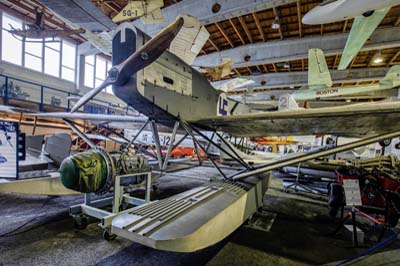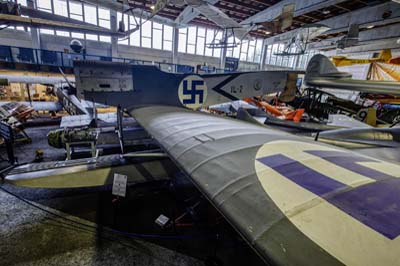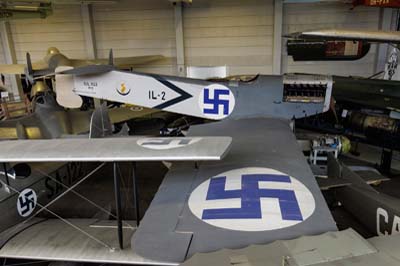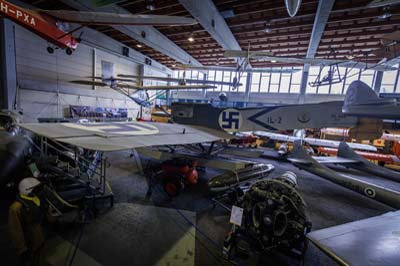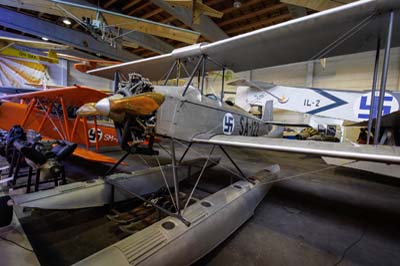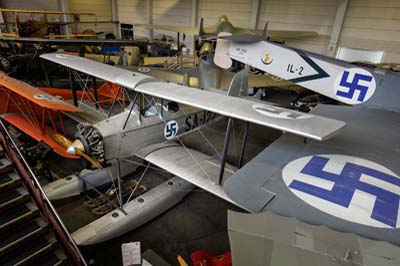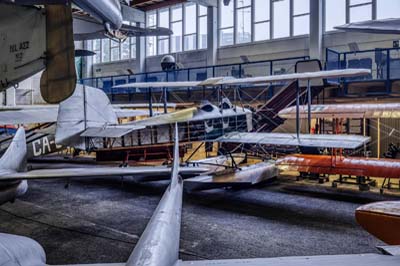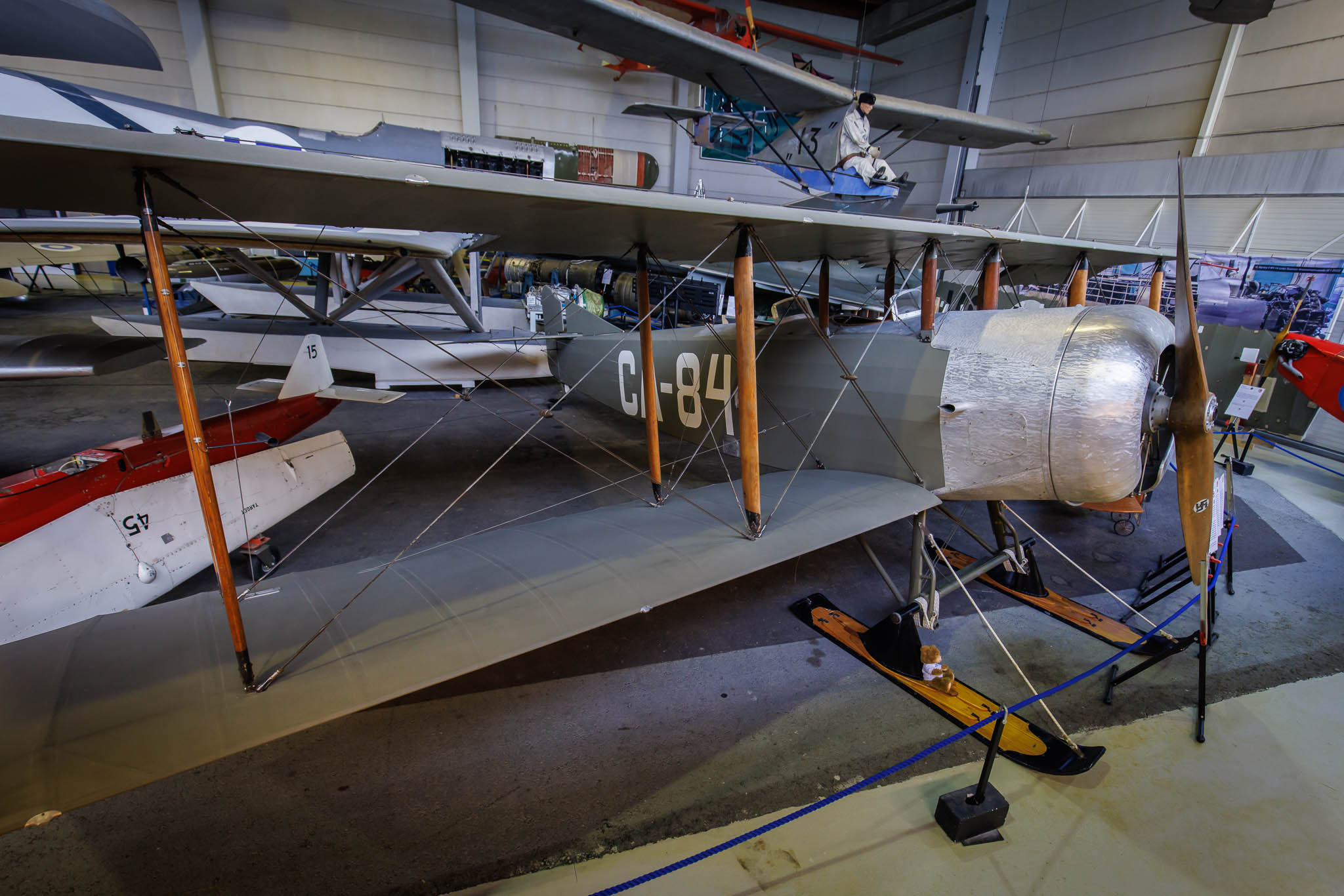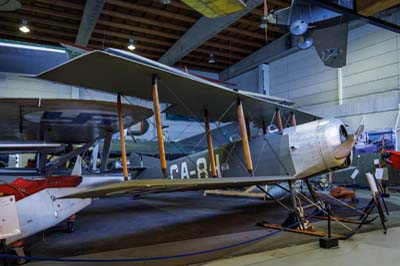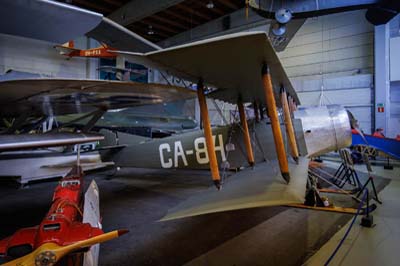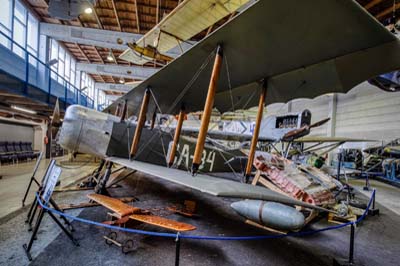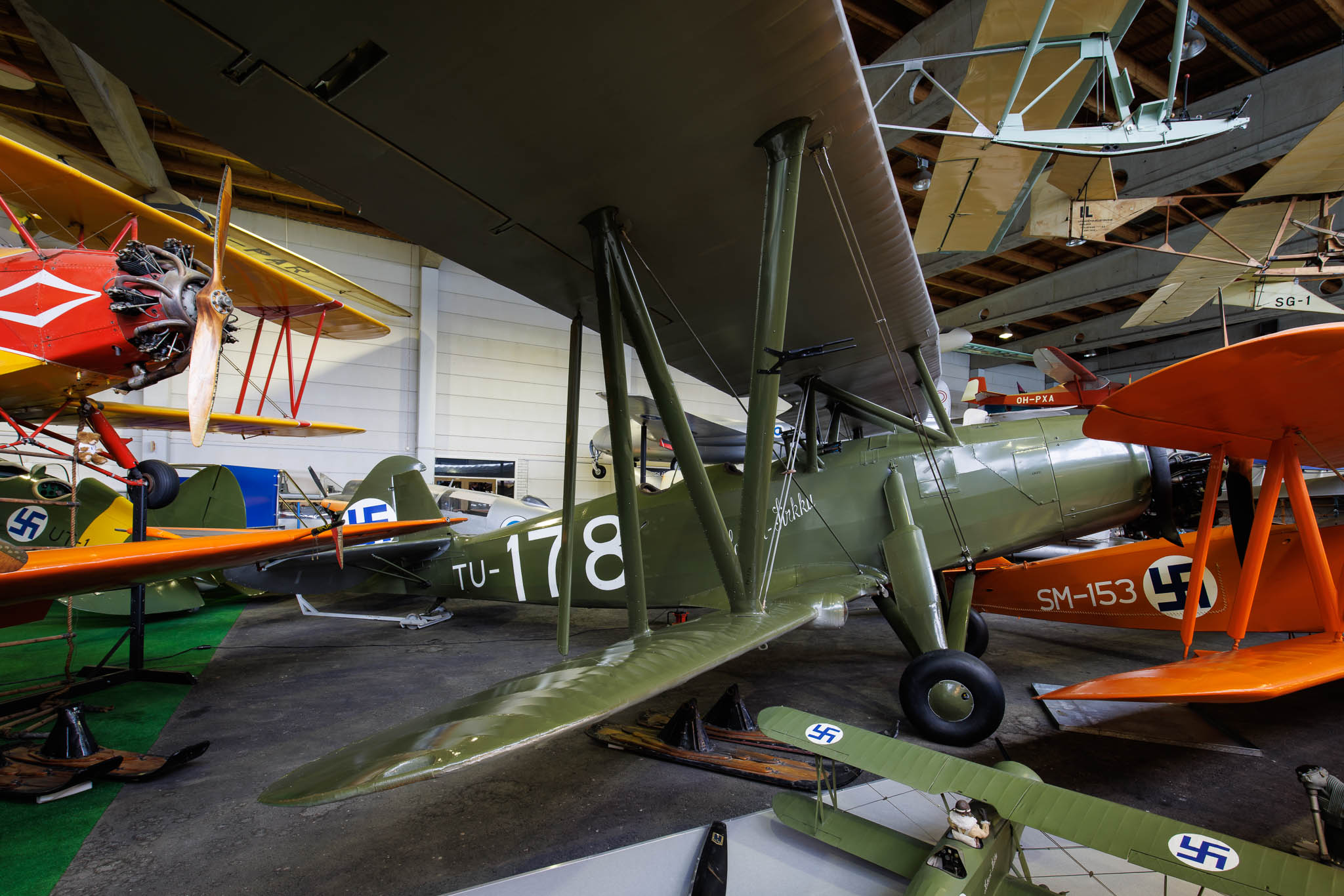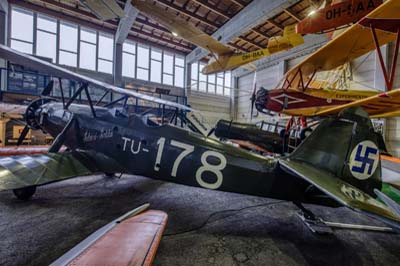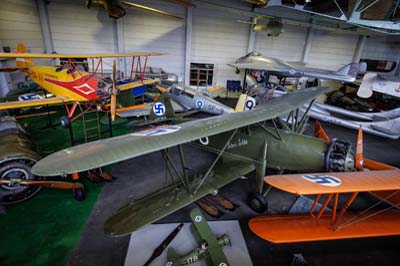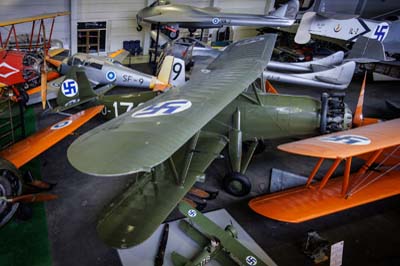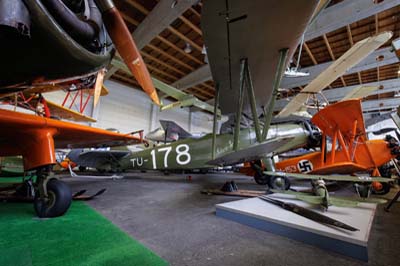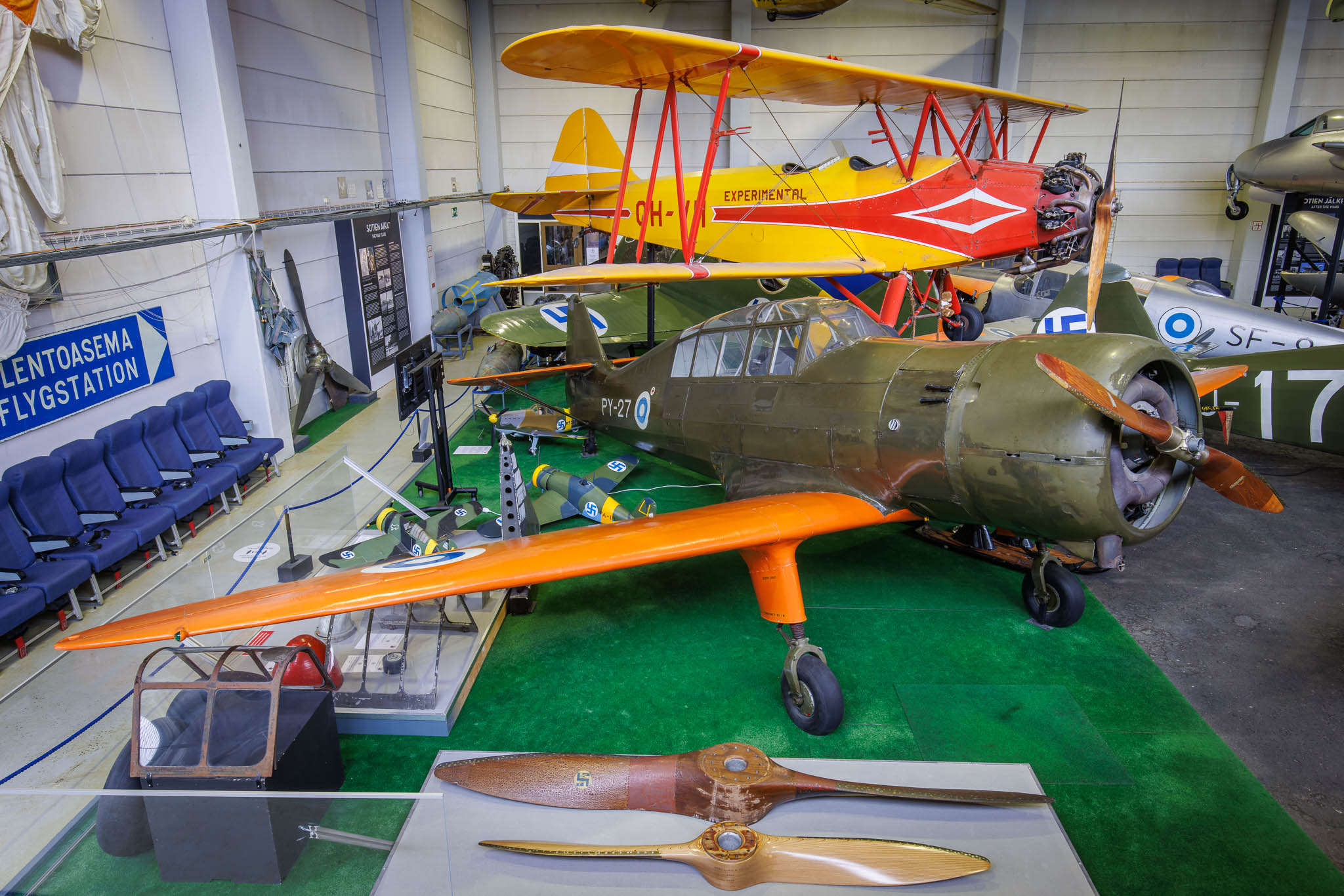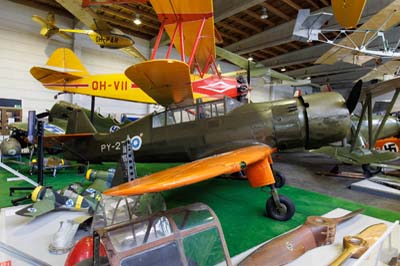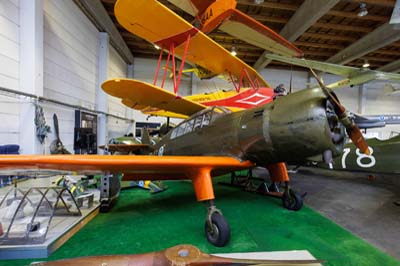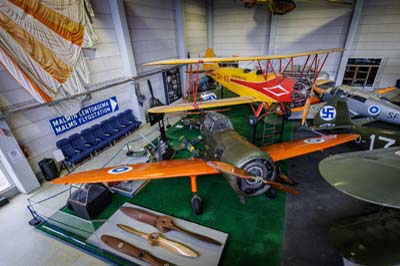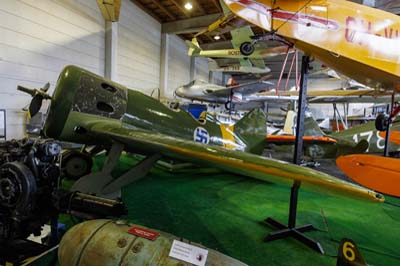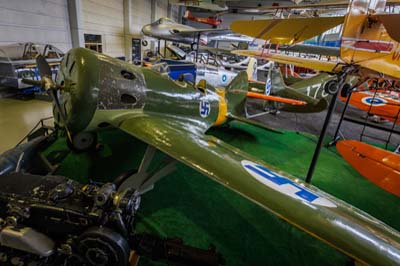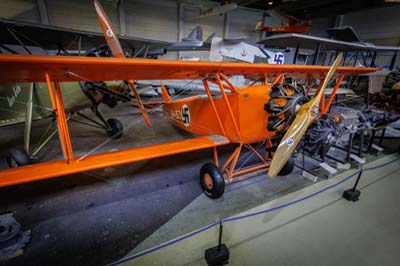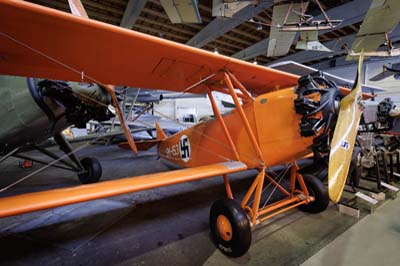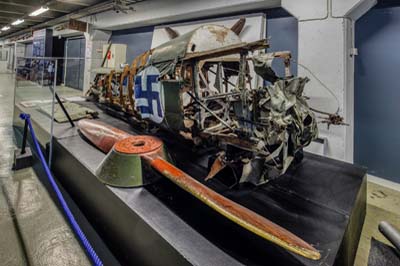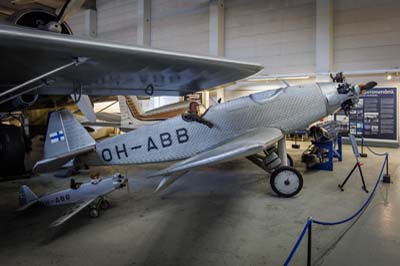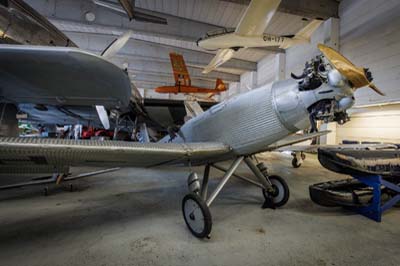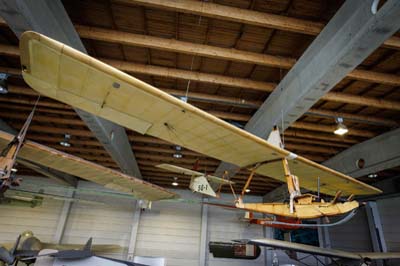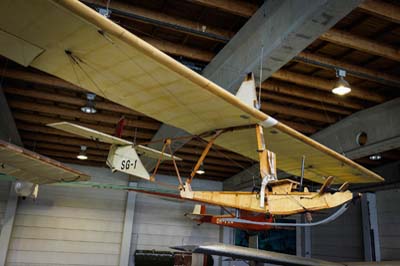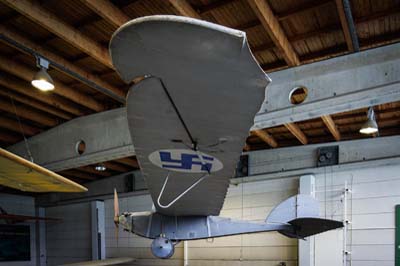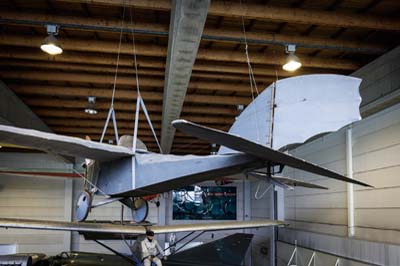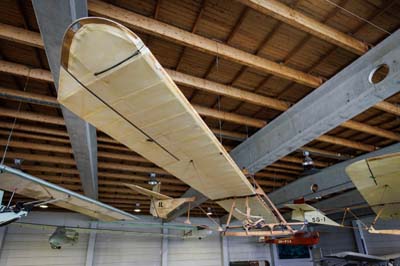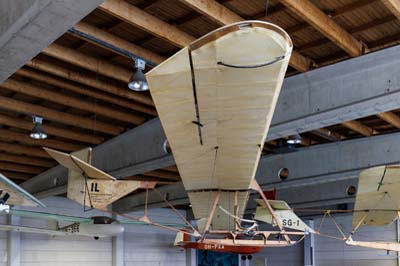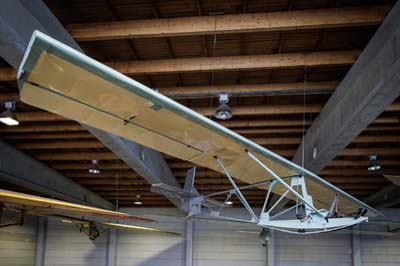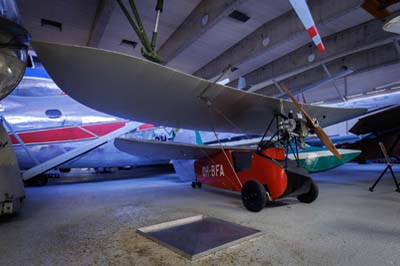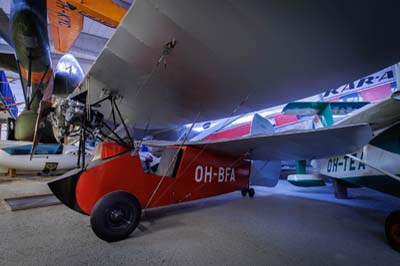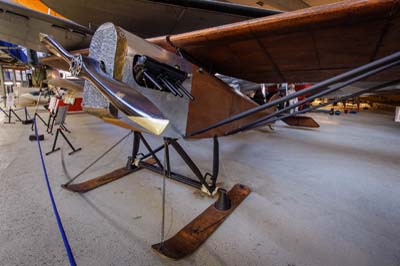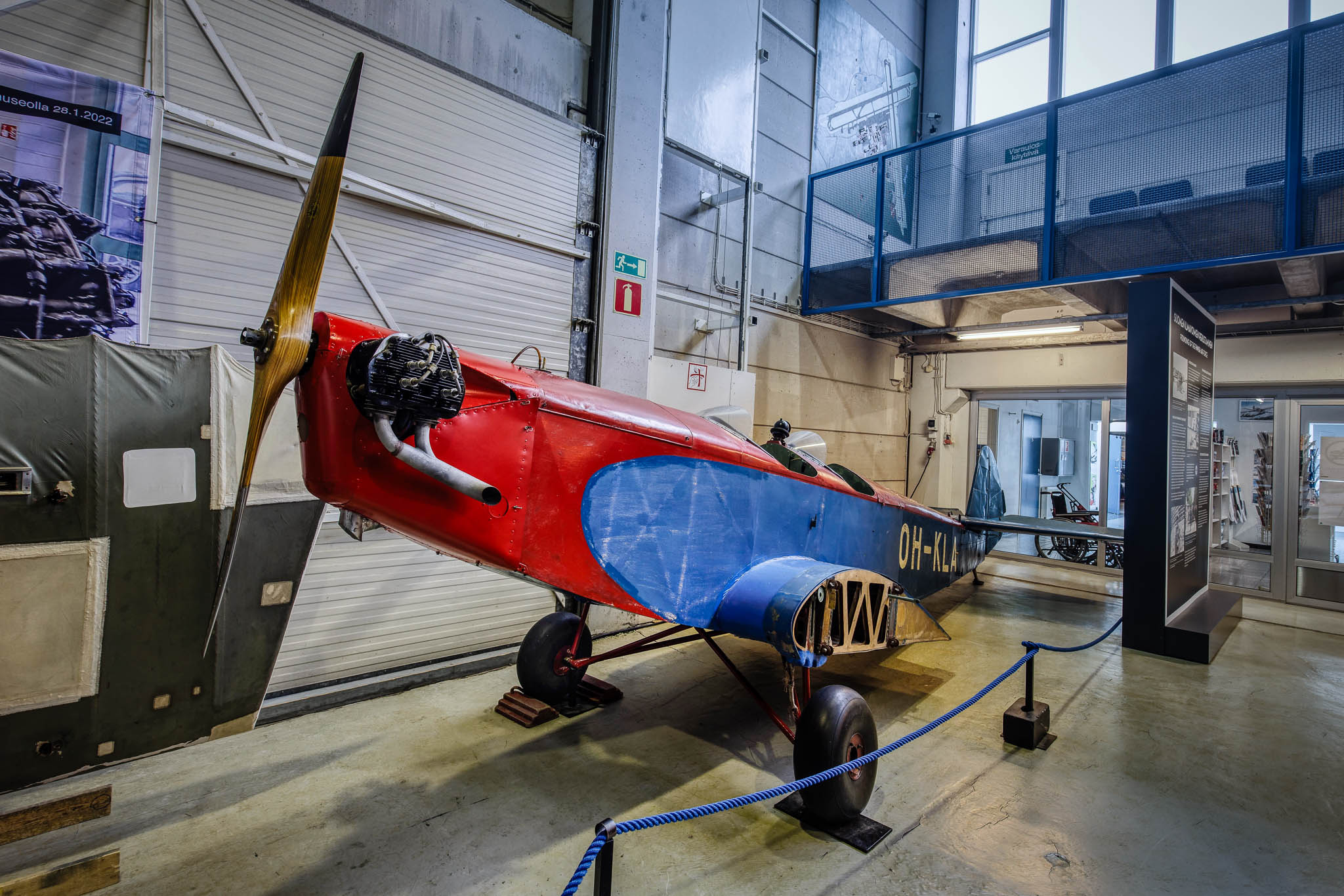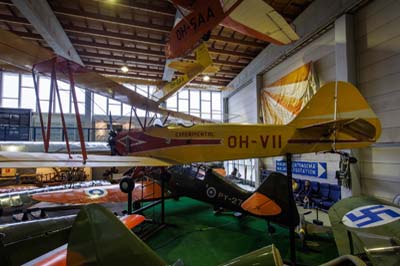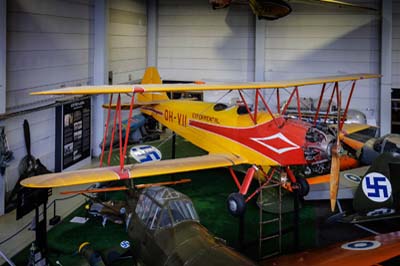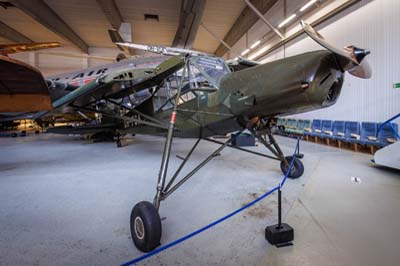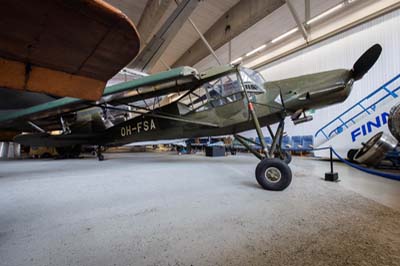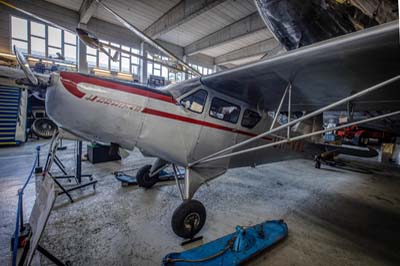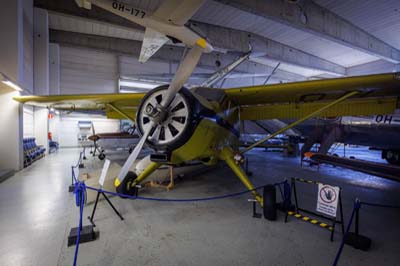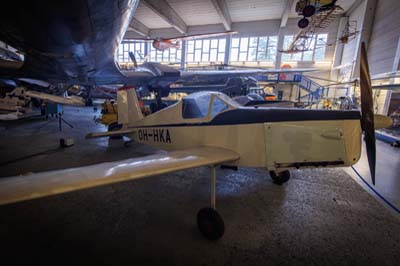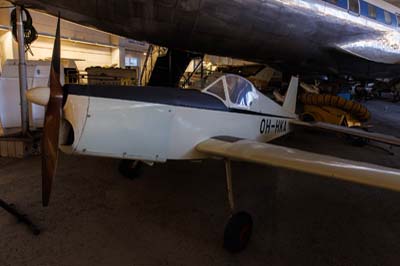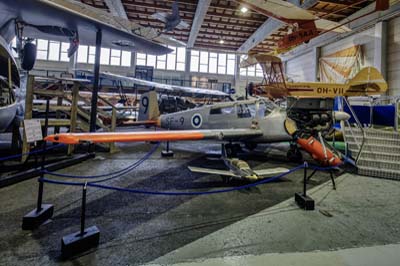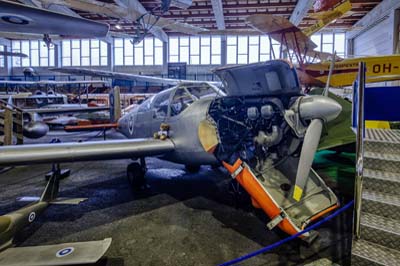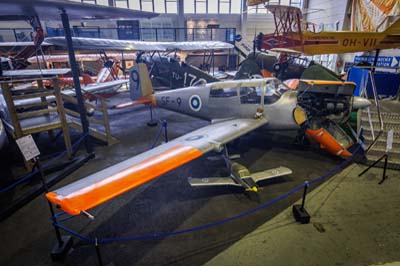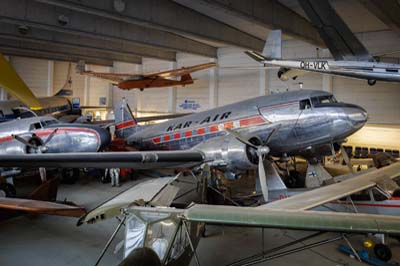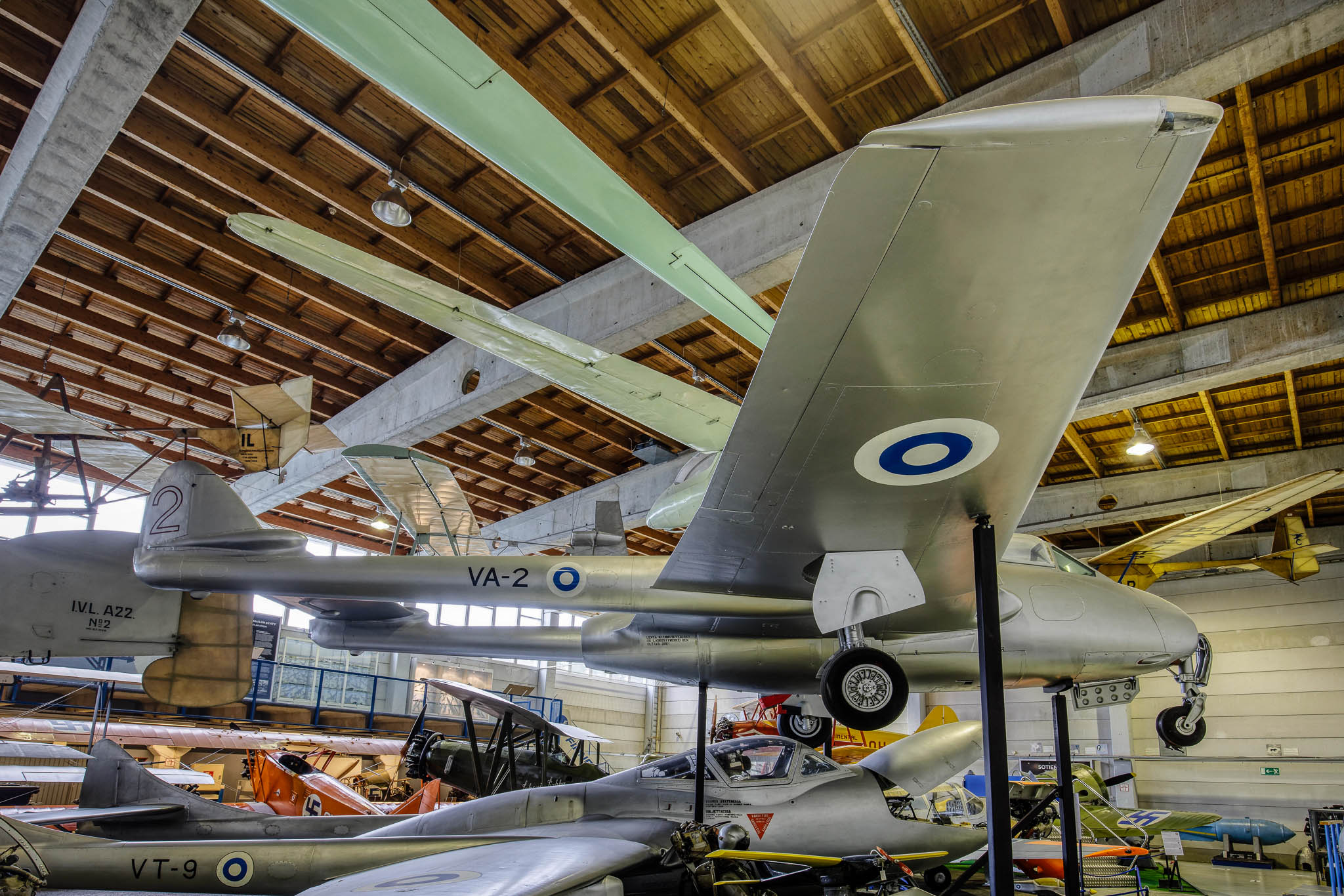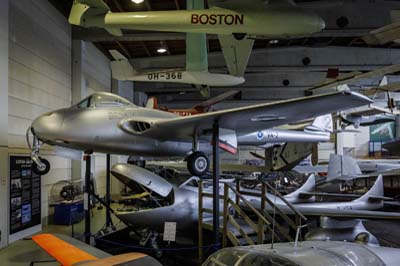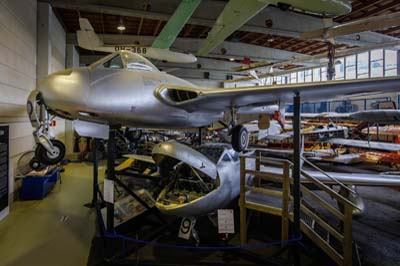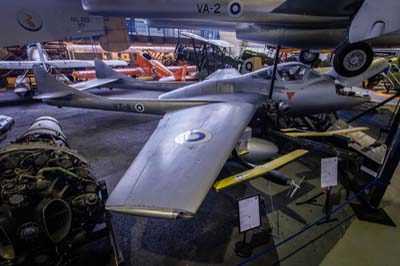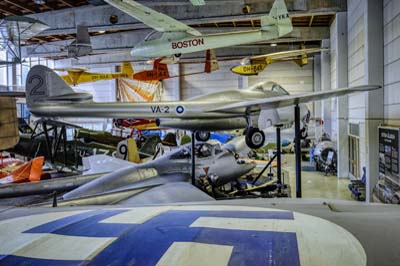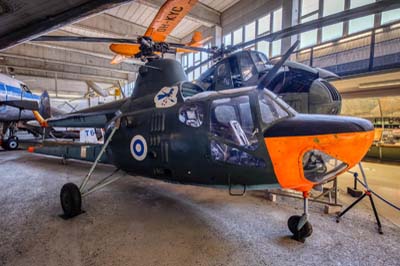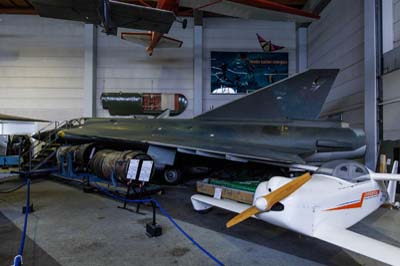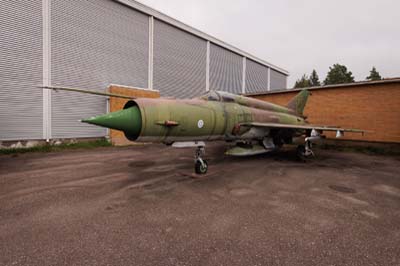Finnish Aviation Museum
Finnish Aviation Museum Foundation
Vantaa, Finland
September 19, 2023
|
| An impressive collection of very rare Finnish aircraft, tightly packed into two hangars. There is a restoration area in the basement of one of the hangars. |
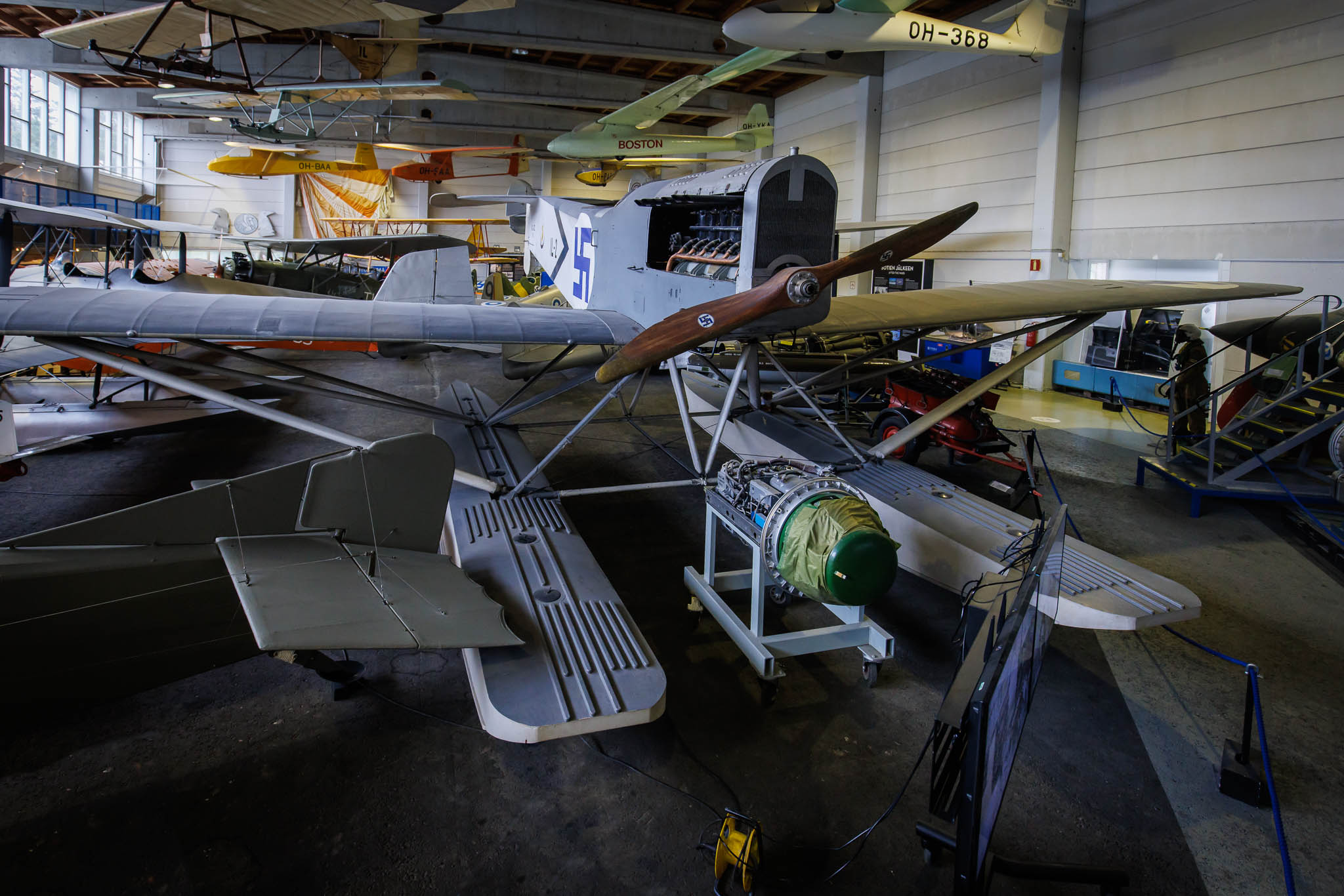 |
Left to right: Ilmailuvoimien Lentokonetehdas (IVL) A.22 Hansa (IL-2 original serial 4.D.2). Designed by Hansa und Brandenburgische Flugzeugwerke in 1918, this Finnish Air Force example is a license-built version of the Hansa-Brandenburg W.33. Production started in Finland in 1922, by 1926 120 Hansas were built, 118 of which for the Finnish Air Force. Equipped with floats they could land on water and with skies could operate on snow and frozen lakes. By 1936 the type had been withdrawn from service.
On display is the second prototype A.22 (IL-2), delivered in 1922, it is the oldest surviving Finnish built aircraft. Following a forced landing in 1927, it was badly damaged. The commander of the Air Force, Jaeger Lieutenant Colonel Väinö Vuorio remarkably for the time issued the order; "If the plane has to be removed, it must be kept for the time being for a possible flight museum." In 1934 after the engine and other reusable parts had been removed, the aviation depot transferred it to the Santahamina museum warehouse to the Mechanics School, where 30 years later it was restored. In 1969 it was moved to the Tampere Technical Museum, and then finally to the Finnish Aviation Museum. It is the only A.22 Hansa to have survived today. |
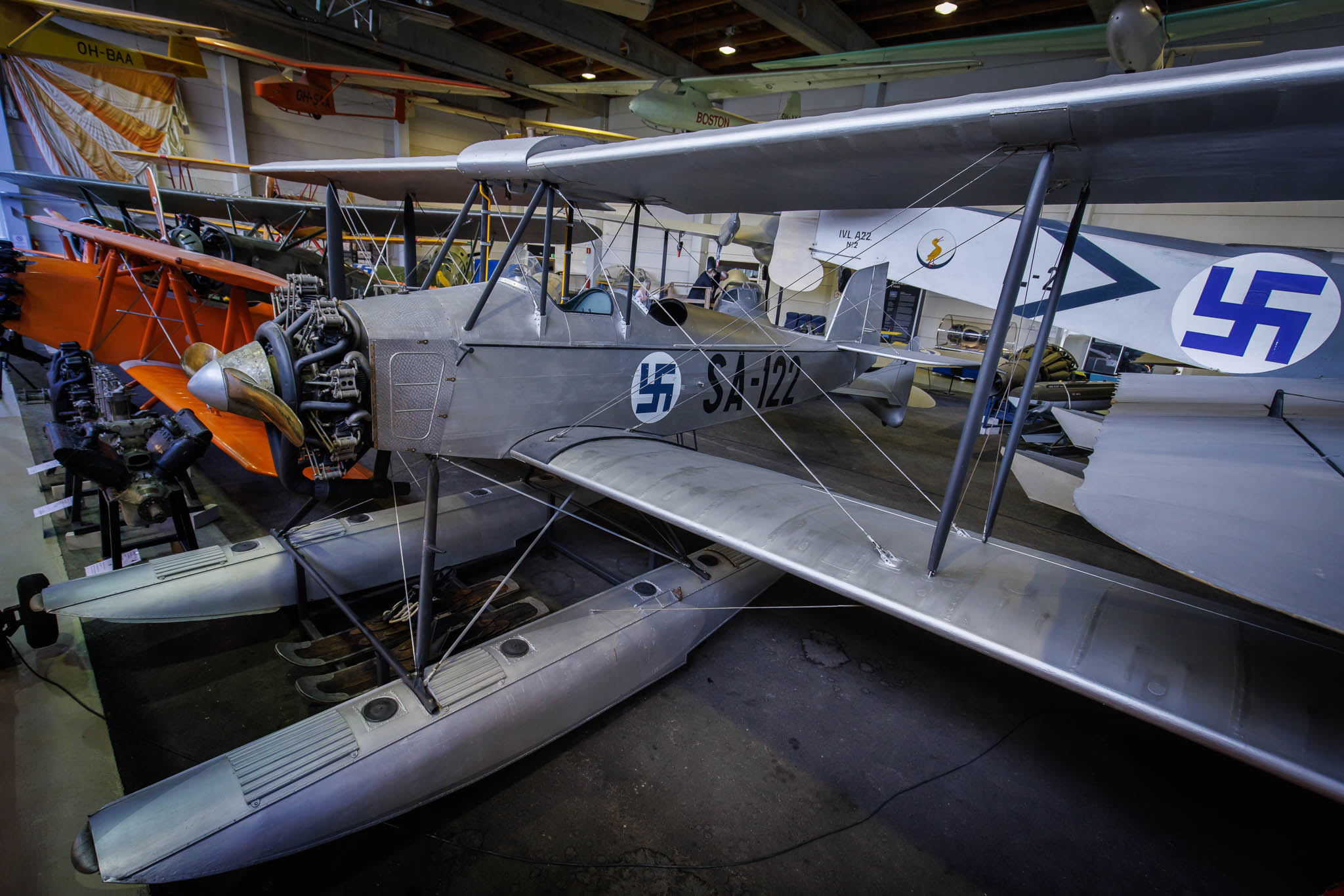 |
| Left to right: Valtion Lentokonetehdas (VL) Sääski II (SA-122). The first of 28 built was completed in 1928 by the Finnish State Aircraft Factory and delivered to the Finnish Air Force. The Sääski (mosquito) was primarily used as a trainer but also for aerial photography, aerial gunnery practice, and as a army liaison aircraft. The type was withdrawn from service in 1943. |
Left to right: Caudron C.60 (CA-84). Designed and built by Société des avions Caudron a C.60 won the Michelin Cup in 1921 for the fastest time flying over a 1,860 miles (3,000 km) circuit in France. In 1923, 30 French built C.60s were purchased by the Finnish Air Force, it was their first aircraft type capable of aerobatics.
Built under license, the Finnish State Aircraft Factory built another 34 C.60s (serials CA-61 to CA-94) between 1926 and 1928, they remained in service as a primary trainer until 1936. |
| Left to right: Valtion Lentokonetehdas (VL) Tuisku (TU-178) named 'Sokeri-Sirkku', ex Finnish Air Force. |
| Left to right: Valtion Lentokonetehdas (VL) Pyry II (PY-27). Designed and built by the Finnish State Aircraft Factory from 1936 as a fighter trainer, the Pyry I prototype (PY-1) first flew in 1939. The Finnish Air Force received 40 Pyry II (serials PY-2 to PY-41) at the Air Force School in Kauhava. They remained in service for 20 years. It was a very difficult aircraft to fly, prone to wingtip stalls. In 28 accidents, 27 pilots were killed. PY-2 is one of three complete surviving examples. |
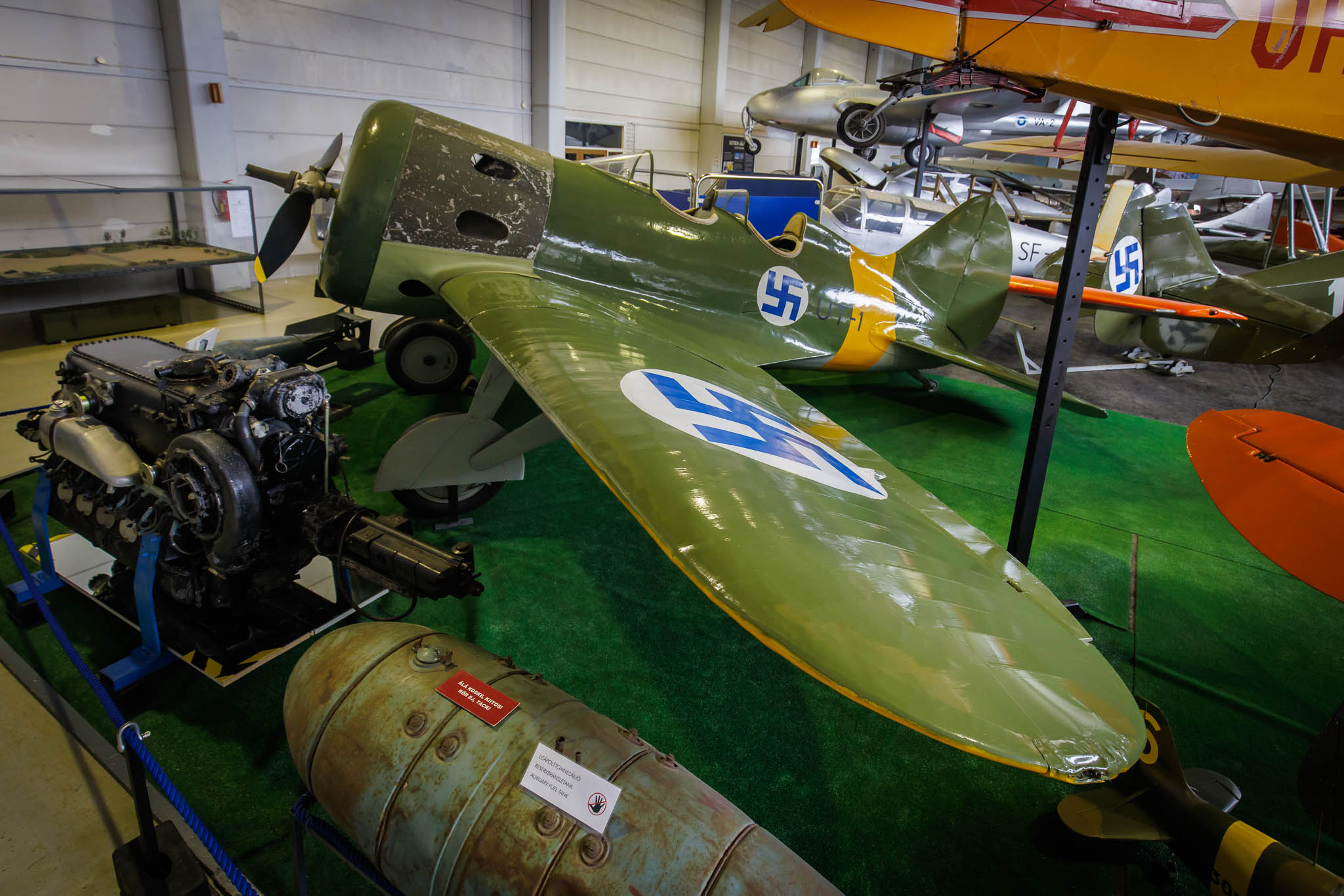 |
Left to right: Polikarpov I-16 UTI-4 (UT-1). Ex Finnish Air Force. This is a two-seat training version of the I-16 fighter aircraft. This example was captured in 1941. It served until September 11, 1942, when it was put into storage. Removed from the army on August 9, 1944, it avoided being scrapped and stored at the Vesivehmaa base. Renovated in 1982-83 in Tampere. It is the only surviving original UTI-4 in the world.
Letov Š-218A Smolik (SM-162 marked 'SM-153' registered OH-SME). The Letov Š-18 designed by Alois Smolík at Letov Kbely, Czechoslovak. The all wooden Š-18 first flew in 1925. Reconstructed with a steel tube frame the Š-218 first flew in 1926 and in 1929 was presented to the Finnish Air Force at the Helsinki International Air Show. Nine were ordered and delivered in 1931. The Finnish State Aircraft Factory built 29 more (serials SM-137 to SM-165) under license. The type remained in service as a primary trainer at the flight school in Kauhava from 1930 to 1945. The only other survivor is in the Kbely Museum, Prague. |
Left to right: Gloster Gamecock II (GA-58). Rear fuselage only, ex Finnish Air Force.
Junkers A50 Junior (OH-ABB previously registered D-1915). Designed as a sports plane its first flight was in 1929. 69 were built by Junkers but only 50 sold. In June 1930 a series of eight World Air Sports Federation or FAI (Fédération Aéronautique Internationale) world records were achieved; for altitude, range and average speed by a floatplane variant of the A50.
This example was flown in 1932 by Olympic athlete Väinö Bremer to Cape Town and back in an historic flight. His 1933 attempt to fly around the World was thwarted by Soviet Officials who refused his permission to overfly their territory. That leg was consequently made by boat. Two other A50 survivors are found in Germany and Australia. |
Left to right: Schneider SG38 (SG-1). Ex Finnish Air Force.
Adaridi AD3 Monoplane, a wooden aircraft designed by the Russian engineer Boris Adaridin, who lived in Finland, built in 1924. Powered by a 12 h.p. Salmson engine it was tested by the Finnish Air Force. |
Left to right: Schneider G-36 ESG-9 (IL). Ex Finnish Air Force. It is a variant of the Schneider Grunau 9 glider, which was built in 1939. The G-36 was a wooden, single-seat primary glider designed for training.
PIK-7 Harakka II (H-56). A primary glider. |
Left to right: Mignet HM-14 Pou-du-Ciel (OH-BFA).
Blomqvist-Nyberg designed and built by Atle Blomqvist and Emil Nyberg is one of the oldest homebuilt aircraft in Finland with a first flight in 1926. |
Left to right: Valtion Lentokonetehdas (VL) Viima II (VI-23 registered OH-VII) ex Finnish Air Force.
Fieseler Fi 156 K-1 Storch (ST-112 registered OH-FSA). Ex Finnish Air Force. Designed in 1935 the Storch was able to fulfil a variety of roles due to its incredible Short-Take-Off and Landing (STOL) capabilities. 2,549 examples were built in Germany, Czechoslovakia and France. |
Left to right: Karhumäki Karhu 48B (OH-VKL).
de Haviland DHC Beaver Mk.1 (OH-MVL) ex Finnish Border Guard, duties included border patrol, search and rescue missions and air ambulance. Delivered August 1951. Donated to museum in 1988.
Heinonen HK-1 Keltiäinen (OH-HKA). |
Left to right: SAAB Safir S-91D (SF-9) ex Finnish Air Force.
Douglas DC-3-214 Dakota (OH-VKB) Kar-Air. |
Left to right: De Havilland Vampire FB.52 (VA-2) ex Finnish Air Force.
De Havilland Vampire T.55 (VT-9) ex Finnish Air Force. |
Left to right: PZL SM-1-600Sz (HK-1) ex Finnish Air Force.
Saab J35BS Draken (DK-206 previously 35245 Swedish AF), ex Finnish Air Force.
Mikoyan-Gurevich MiG-21bis (MG-135) ex Finnish Air Force. |

